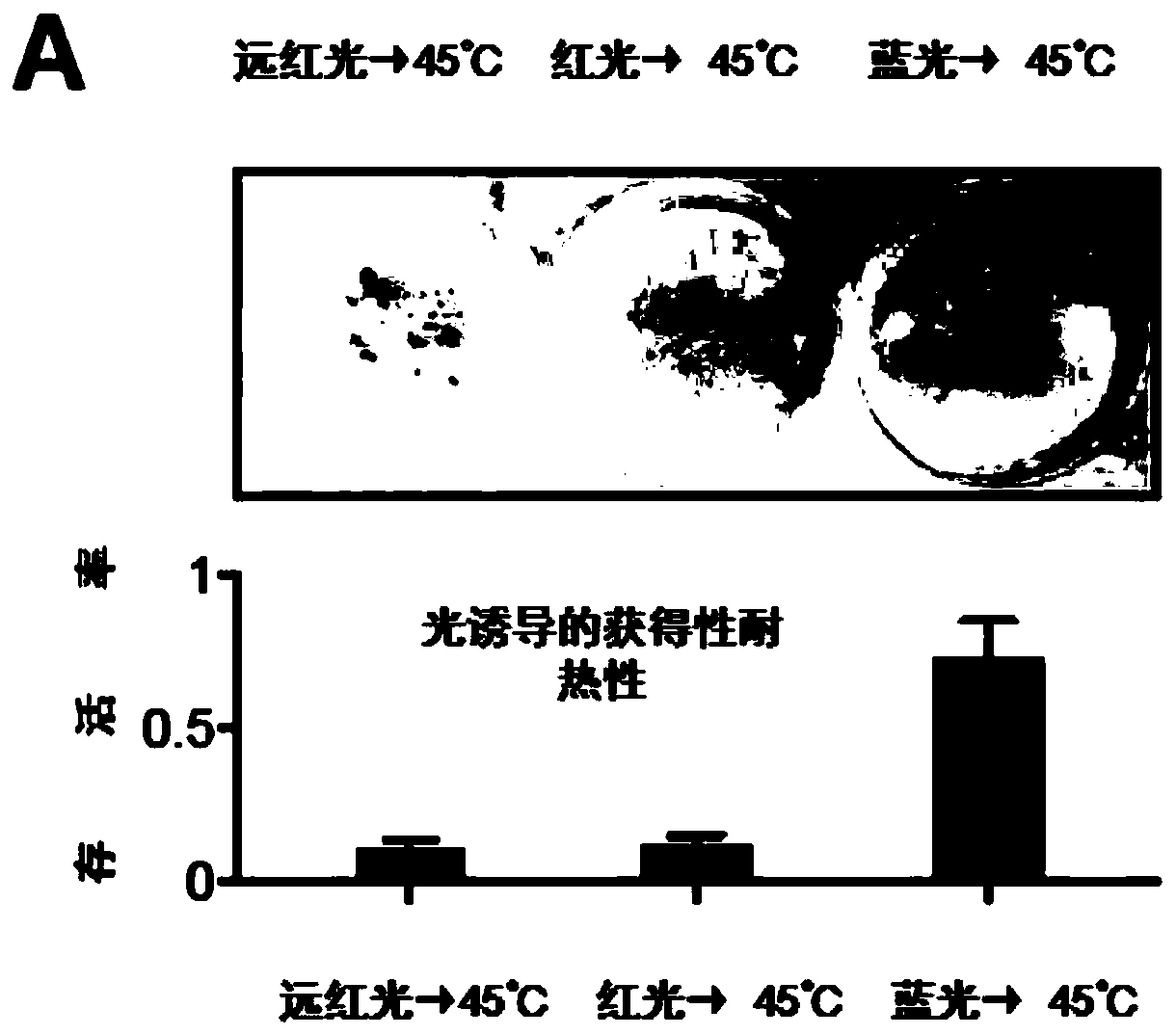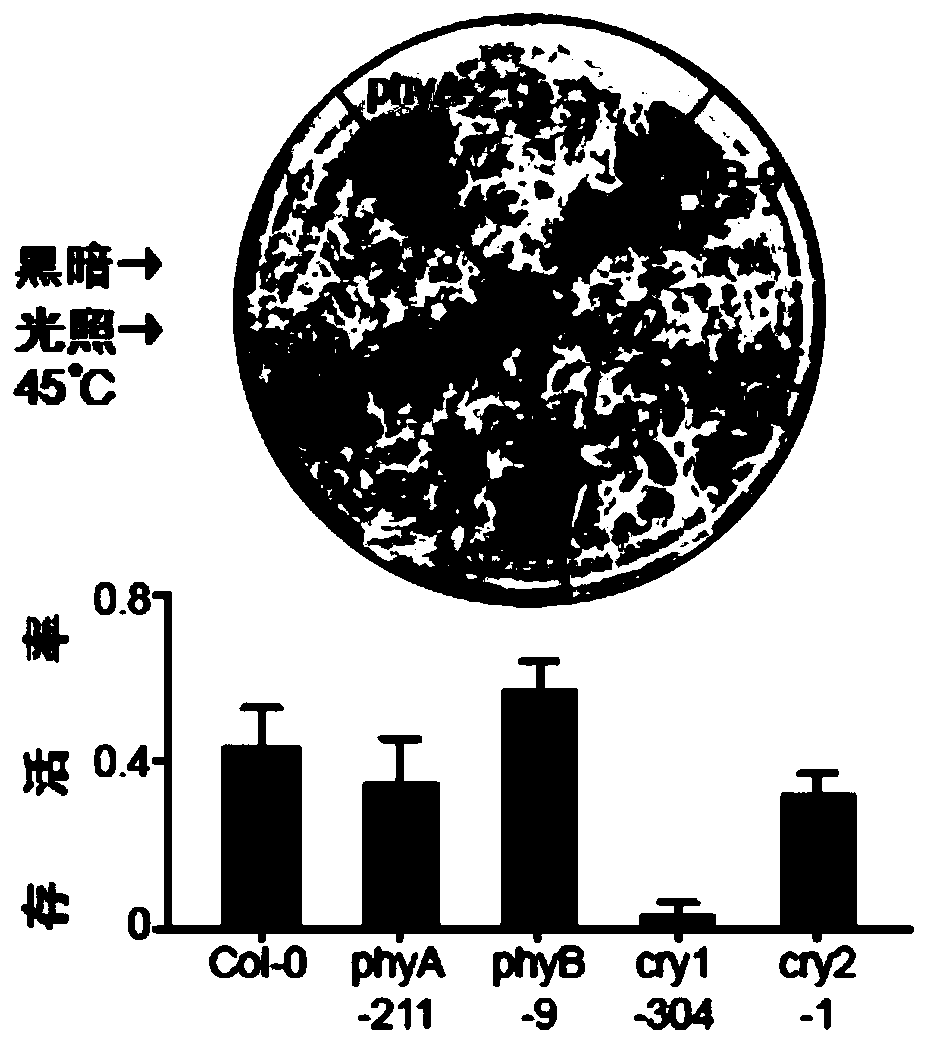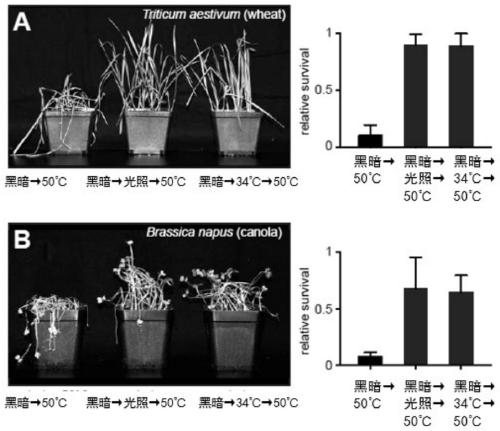Heat-resisting gene CRY1 and application thereof, microzyme and preparation method and application of microzyme
A yeast and gene technology, applied in the field of molecular biology, can solve problems such as direct signal pathways are not very clear, and achieve the effects of avoiding climate warming, improving heat resistance, and improving adaptability
- Summary
- Abstract
- Description
- Claims
- Application Information
AI Technical Summary
Problems solved by technology
Method used
Image
Examples
Embodiment 1
[0037] A heat-resistant gene CRY1, the gene sequence of which is shown in SEQ ID NO.1, specifically:
[0038]ATGTCTGGTTCTGTATCTGGTTGTGGTTCTGGTGGTTGTAGTATTGTATGGTTTAGAAGAGATCTTAGGGTTGAAGATAATCCAGCTTTAGCAGCAGCAGTAAGAGCTGGTCCAGTGATTGCTCTGTTTGTTTGGGCACCAGAAGAAGAAGGACACTATCATCCAGGTAGGGTTTCTAGGTGGTGGCTCAAGAACAGTTTGGCTCAGCTTGATTCTTCTCTTAGAAGTCTTGGTACTTGTCTTATCACCAAGAGATCTACTGATAGTGTTGCTTCTCTTCTTGATGTTGTTAAATCCACTGGTGCTTCTCAGATCTTCTTCAACCATTTGTATGATCCATTGTCTTTGGTGCGTGATCACCGAGCTAAAGATGTTTTGACGGCGCAAGGCATAGCGGTTCGATCATTCAACGCAGACTTGCTTTATGAGCCATGGGAAGTGACTGATGAATTAGGCCGTCCTTTCTCTATGTTTGCTGCGTTTTGGGAGAGATGTCTTAGTATGCCTTATGACCCTGAGTCTCCTCTTCTTCCACCTAAGAAGATCATTTCAGGGGATGTGTCTAAATGTGTTGCGGATCCATTGGTGTTTGAGGATGACTCTGAGAAAGGAAGCAATGCACTTCTGGCTCGTGCTTGGTCTCCTGGATGGAGTAATGGTGATAAAGCTCTCACAACGTTTATAAACGGTCCATTGCTTGAATACTCTAA GAACCGCAGA AAAGCCGATA GTGCTACAACCTCGTTTCTTTCTCCACACT TGCATTTTGG GGAAGTGAGTGTGAGAAAAGTTTTTCATCTTGTTCGGATCAAACAGGTCGCGTGGGCAAACGAAGGAAACGAGGCCGGGGAAGAAAGCGTGAATCTTTTCCTGAAATCTA...
Embodiment 2
[0042] The application of the CRY1 gene in a kind of embodiment 1 aspect improving plant heat tolerance, its application method is:
[0043] The seedlings of monocot wheat and dicotyledonous rapeseed (all containing CRY1 gene in these two plants) grown for 4 days at 22°C in a dark light incubator were treated in three groups:
[0044] The first group continued to be treated in the dark at 22°C;
[0045] The second group was treated with white light at 22°C for 1 hour;
[0046] The third group was treated at 34°C and in the dark.
[0047] The seedlings after the three treatments were subjected to lethal heat stress treatment at 45°C for 2 hours, and finally placed under normal growth conditions for 7 days.
[0048] Investigate the survival of plants after high temperature treatment. For inspection results, see image 3 .
[0049] image 3 A is the plant survival of monocot wheat after high temperature treatment. image 3 B is the plant survival situation of dicotyledonou...
Embodiment 3
[0051] The application of the CRY1 gene in a kind of embodiment 1 aspect improving microbial heat resistance, its application method is:
[0052] HSE-YFP is a heat shock response reporter system, HSE is the heat shock element, the heat shock response main factor HSF1 is combined with HSE, HSE will start the expression of YFP fluorescent fluorescent protein, and the fluorescence can be observed under the fluorescence microscope, which can be measured according to the fluorescence The intensity of protein fluorescence was used to judge the activity degree of heat shock response.
[0053] The HSE-YFP reporter system was transformed into wild-type strain w303a, pNH604-mKate-transformed strain, pNH604-CRY1-mKate-transformed strain and pNH604-CRY1-mKate-NLS-transformed yeast strain (the protein encoded by the mKate gene is a fluorescent protein , as the tag of CRY1 protein, which can make the CRY1 gene be observed inside the cell), and the fluorescence intensity of each strain was m...
PUM
 Login to View More
Login to View More Abstract
Description
Claims
Application Information
 Login to View More
Login to View More - R&D
- Intellectual Property
- Life Sciences
- Materials
- Tech Scout
- Unparalleled Data Quality
- Higher Quality Content
- 60% Fewer Hallucinations
Browse by: Latest US Patents, China's latest patents, Technical Efficacy Thesaurus, Application Domain, Technology Topic, Popular Technical Reports.
© 2025 PatSnap. All rights reserved.Legal|Privacy policy|Modern Slavery Act Transparency Statement|Sitemap|About US| Contact US: help@patsnap.com



